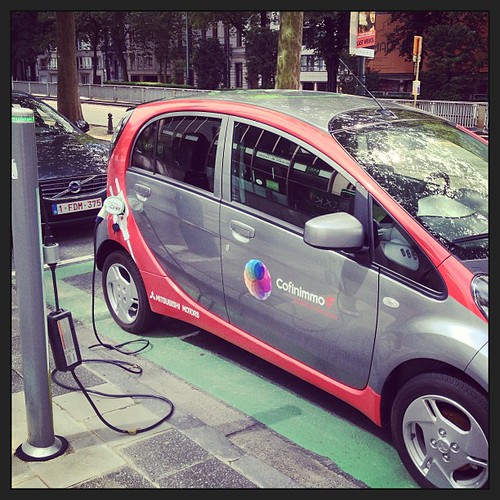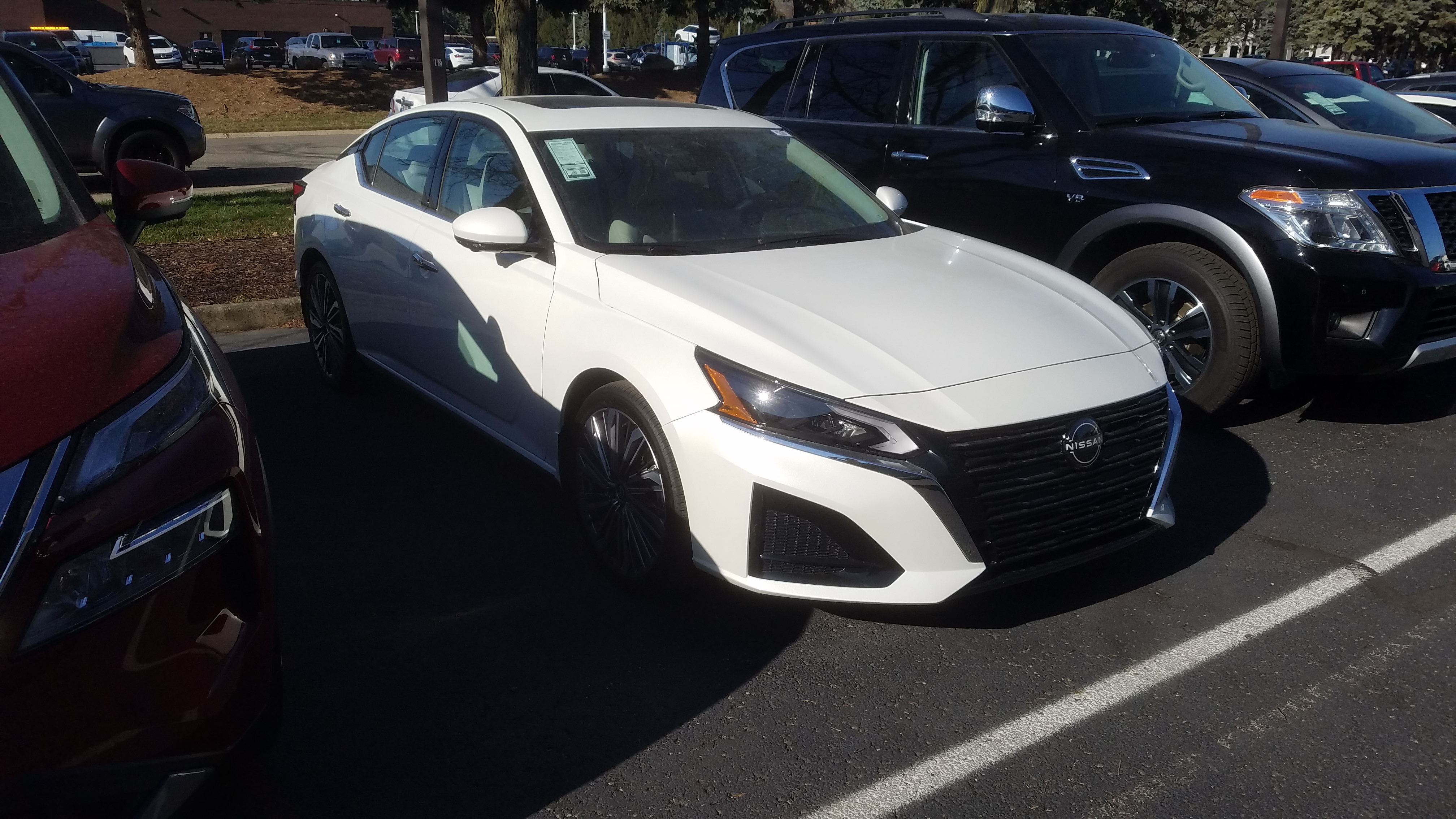
The automotive landscape is constantly evolving, with crossovers and SUVs often dominating sales charts and consumer attention. Yet, in this dynamically shifting environment, the midsize sedan is not merely surviving; it’s staging a powerful resurgence. These vehicles are transforming from their traditional role as practical family haulers into true statement vehicles, no longer content to simply prioritize utilitarian functions. Today’s sophisticated four-doors emphasize distinctive style, exhilarating driving dynamics, and advanced, often electrified, powertrains, all meticulously designed to capture the attention of discerning buyers seeking more than basic transportation.
For many generations, the midsize sedan stood as the quintessential family car, offering a perfect blend of spaciousness, comfort, and accessible affordability. While their purely functional roles may have been partially eclipsed by the ubiquitous rise of compact and midsize SUVs, the segment has adapted with remarkable agility and innovation. Today’s midsize sedans are frequently “huge inside, with commodious trunks, too,” providing interior room that often rivals, or even surpasses, many larger utility vehicles. Most models continue to offer dependable front-wheel drive, but the increasing availability of all-wheel drive serves as “further enticement for would-be SUV shoppers,” effectively bridging the gap between sedan and SUV versatility.
This comprehensive and in-depth analysis, meticulously guided by MotorTrend’s Ultimate Car Rankings, delves into the finest mainstream midsize sedans you can confidently buy for the 2025 model year. Our objective is to empower consumers with practical, actionable information, exploring what precisely makes these vehicles stand out in terms of their performance, fuel efficiency, cutting-edge technological advancements, and overall inherent value. Join us as we uncover the top contenders in a segment that resolutely proves practicality, when thoughtfully combined with genuine panache and driving enjoyment, can indeed coexist harmoniously, offering compelling alternatives to the SUV craze.
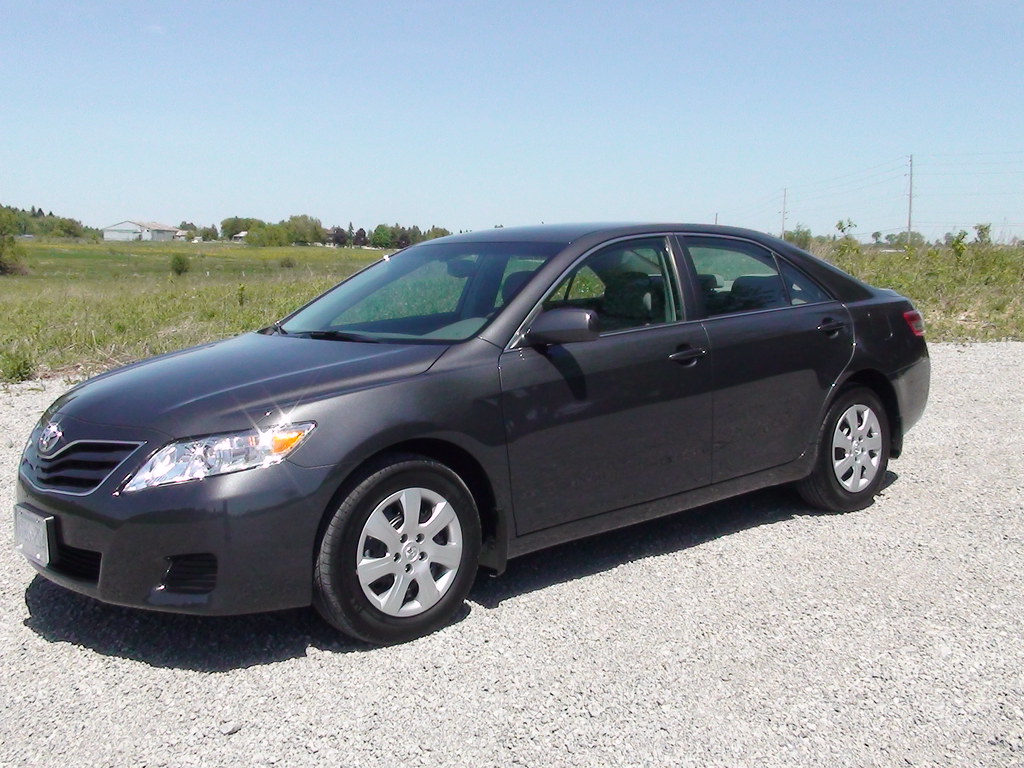
1. **2025 Toyota Camry**
The Toyota Camry has long epitomized reliability, often perceived as the sensible, perhaps predictable, choice for quiet dependability. However, the 2025 Camry is anything but staid. Building on previous generations, its external styling is refined, toning down some of the more “riotous styling”—the “creases and slats and angles”—that characterized earlier models. Simultaneously, a “bold inside and underneath” overhaul delivers a striking presence, integrating advanced features without sacrificing core strengths.
A significant shift for 2025 is the Camry’s unwavering commitment to hybrid-only powertrains, underscoring Toyota’s dedication to exceptional efficiency. The “all-new” cabin is meticulously designed for a fresh, modern, and ergonomic environment, seamlessly integrating improved tech and standard safety gear. Power comes from a “two-motor hybrid setup powering the front wheels on every Camry,” ensuring impressive fuel economy and robust performance across the entire lineup.
For enhanced traction and confidence, “a third electric motor is added to all-wheel-drive versions,” uniquely positioned on the rear axle. This intelligent design provides superior grip and stability in diverse conditions. It also bestows AWD Camrys with “more powerful and quicker” acceleration, remarkably with “barely any impact on fuel economy.” The cheapest Camry, astonishingly, delivers a “hefty 51 mpg combined,” a testament to its advanced hybrid engineering.
The 2025 Camry shrewdly caters to diverse driver preferences through differentiated trim levels. SE and XSE variants offer a “sportier suspension setup and even more aggressive styling” for a dynamic experience. Conversely, LE and XLE versions maintain a “softer” ride, “geared toward traditional Camry customers,” yet ride on a “comparatively buttoned-up chassis.” With “better feature availability than Accord,” “more driving sizzle than any Camry ever,” and “traditional Camry value,” it has “eked its way atop our midsize sedan rankings,” cementing its vibrant appeal.
Car Model Information: 2024 Toyota Camry SE
Name: Toyota Camry
Caption: 2018 Toyota Camry Ascent (ASV70, Australia)
Manufacturer: Toyota
Production: March 1982 – present
Aka: ubl
Class: ubl
Layout: ubl
Predecessor: ubl
Successor: Toyota Avensis (T250)
Categories: 1990s cars, 2000s cars, 2010s cars, 2020s cars, All-wheel-drive vehicles
Summary: The Toyota Camry (; Japanese: トヨタ・カムリ Toyota Kamuri) is an automobile sold internationally by the Japanese auto manufacturer Toyota since 1982, spanning multiple generations. Originally compact in size (narrow-body), the Camry has grown since the 1990s to fit the mid-size classification (wide-body)—although the two widths co-existed in that decade. Since the release of the wide-bodied versions, Camry has been extolled by Toyota as the firm’s second “world car” after the Corolla. As of 2022, the Camry is positioned above the Corolla and below the Avalon or Crown in several markets.
In Japan, the Camry was once exclusive to Toyota Corolla Store retail dealerships. Narrow-body cars also spawned a rebadged sibling in Japan, the Toyota Vista (トヨタ・ビスタ)—also introduced in 1982 and sold at Toyota Vista Store locations. Diesel fuel versions have previously retailed at Toyota Diesel Store. The Vista Ardeo was a wagon version of the Vista V50.
Get more information about: Toyota Camry
Buying a high-performing used car >>>
Brand: Toyota Model: Camry
Price: $27,995 Mileage: 29,122 mi.
Read more about: Built to Last: 12 Reliable Sedans That Will Cruise Past 200,000 Miles
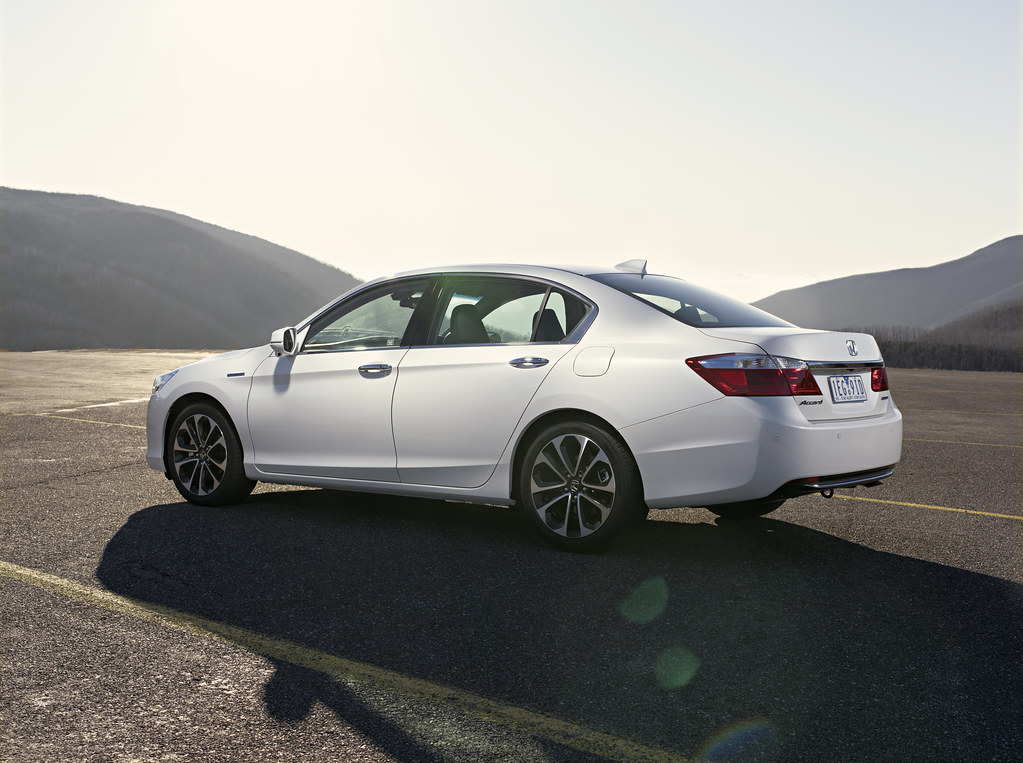
2. **2025 Honda Accord**
The Honda Accord consistently ranks among the best cars available, independent of size or price-class boundaries. For decades, it’s been a benchmark in the midsize sedan segment, renowned for “satisfying driving dynamics, sleek but not too extroverted styling, and excellent engines and powertrains.” Honda has long “cornered the midsize sedan market,” offering “quality interiors and mechanical reliability,” a legacy upheld in the 2025 model year. It feels both sophisticated and approachable.
From entry-level configurations with a “turbocharged gas engine that’s both fuel-efficient and decently peppy,” to the bulk of the lineup, the Accord showcases Honda’s engineering prowess. Its widespread appeal lies in Honda’s “clever two-motor hybrid system,” thoughtfully paired with a non-turbocharged four-cylinder engine. This innovative setup allows the “bigger of the two electric motors” to perform most motivating duties, with the gasoline engine operating largely “as a generator in the background,” optimizing fuel consumption.
Crucially, “at full throttle or freeway speeds, however, the engine can be clutched in to help drive the front wheels (an arrangement that’s more efficient).” The remarkable result of this sophisticated powertrain integration is an Accord that “drives much like an EV, with smooth, all-electric takeoffs and punchy acceleration around town.” This refined driving experience effectively blurs the lines between gasoline and electric propulsion, offering a wonderfully responsive, quiet, and dynamically satisfying drive.
The Accord, quite simply, “does everything a sedan should do—and does it really, really well while offering compelling value.” It delivers a “great to drive” experience, a “smooth, peppy, and efficient hybrid” system, and a “classy and roomy interior.” This exceptional execution allows consumers to overlook minor frustrations, such as the “frustrating allocation of must-have features to only higher-priced trims” and “small screens on gas-only models.” Its consistent excellence and reliability firmly cement its position as a top-tier choice.
Car Model Information: 2016 Honda Accord LX
Name: Honda Accord
Caption: 2023 Honda Accord LX (US)
Alt: Front three-quarter view of a front-engined four-door car.
Manufacturer: Honda
Production: 1976–present
Class: Compact car
BodyStyle: hatchback
Layout: Front-engine, front-wheel-drive layout
Predecessor: Honda 1300
Categories: 1980s cars, 1990s cars, 2000s cars, 2010s cars, 2020s cars
Summary: The Honda Accord (Japanese: ホンダ・アコード, Hepburn: Honda Akōdo; ), also known as the Honda Inspire (Japanese: ホンダ・インスパイア, Hepburn: Honda Insupaia) in Japan and China for certain generations, is a series of automobiles manufactured by Honda since 1976, best known for its four-door sedan variant, which has been one of the best-selling cars in the United States since 1989. The Accord nameplate has been applied to a variety of vehicles worldwide, including coupes, station wagons, hatchbacks and a Honda Crosstour crossover.
Get more information about: Honda Accord
Buying a high-performing used car >>>
Brand: Honda Model: Accord
Price: $15,399 Mileage: 97,051 mi.
Read more about: Fort Knox on Wheels: The Ultimate Guide to 15 Anti-Theft Devices That Keep Your Classic Car Safe and Sound
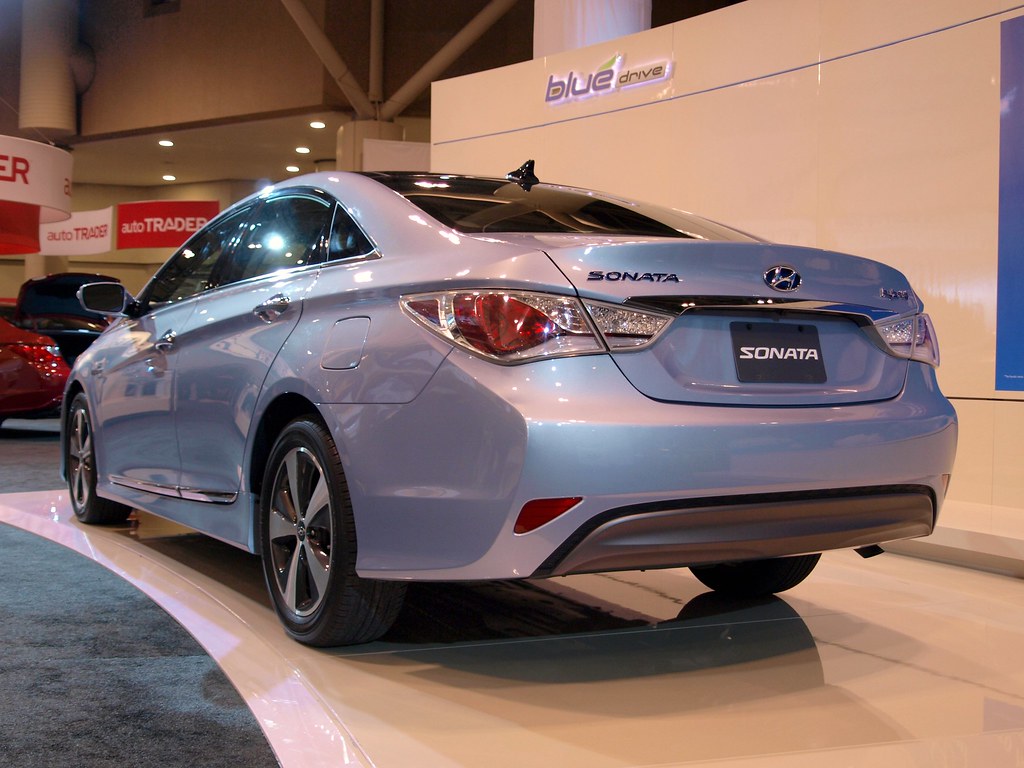
3. **2025 Hyundai Sonata**
The 2025 Hyundai Sonata, a close and dynamically styled sibling to the Kia K5, distinguishes itself with a profound “greater focus on comfort and technology,” skillfully softening the K5’s “harder-edged, sporty mien.” Hyundai made a significant design statement last year by “doubl[ing] down on futurism,” bestowing the Sonata with an instantly recognizable and incredibly “cool ‘unibrow’ LED front signature” and meticulously tweaking the entirety of the styling. This audacious and contemporary approach extends seamlessly into the interior, where the integration of Hyundai’s “latest dual digital displays atop the dashboard” creates a thoroughly modern, upscale, and technologically advanced ambiance for both driver and passengers.
For those discerning individuals who perceive a sedan purchase as a distinct opportunity to make a strong and personal design statement, the Sonata unequivocally “is a winner—we can’t take our eyes off it.” Its daring stylistic risks undeniably pay off, delivering a visually compelling vehicle that boldly stands apart in an often-homogeneous segment. Moreover, this aesthetic flair is intelligently and practically packaged with robust assurances: “all the Sonata’s flash is wrapped up in Hyundai’s signature warranty coverage, and the latest active safety equipment is included standard,” a comprehensive suite that includes automated emergency braking, lane-keep assist, and automatic high-beam control. This combination powerfully underscores the substantial real value intrinsically embedded within its futuristic and eye-catching design, offering peace of mind alongside cutting-edge aesthetics.
However, the Sonata, like any vehicle, isn’t entirely without its minor caveats, primarily concerning its engine lineup. While generally competent and well-suited for daily driving, the standard offerings “aren’t especially powerful outside of the new N Line model’s 2.5-liter turbo four.” This specific “N-Line model,” lauded as “fun and comfortable,” offers a welcome and significant boost in performance, catering to those drivers seeking a more spirited and engaging experience behind the wheel. Another practical consideration for potential buyers, particularly those with frequent rear passengers, is the observation that the “back seats, which are on the tighter side for the class,” might require a closer look to ensure adequate comfort for all occupants.
Despite these relatively minor critiques, the Sonata excels brilliantly at its core mission. If the contemporary trend of purchasing a sedan is indeed “about making a statement that a crossover or SUV is just too practical,” then the “Sonata can help you make that assertion loud and clear” with its distinct personality and design. The availability of a hybrid model further enhances its broad appeal, offering a “smooth drive and sky-high fuel economy” that positions it exceptionally competitively at the very top end of efficiency ranges listed in the specifications. This remarkable blend of daring design, advanced technology, a comprehensive safety suite, and practical value, especially in its hybrid guise, makes the 2025 Hyundai Sonata a compelling, distinctive, and truly smart choice for the modern consumer seeking both style and substance.
Car Model Information: 2022 Hyundai SONATA SEL Plus
Name: Hyundai Sonata
Caption: 2024 Hyundai Sonata SEL (US)
Manufacturer: Hyundai Motor Company
Production: 1985–present
Class: Mid-size car
BodyStyle: sedan (automobile)
Layout: ubl
Predecessor: Hyundai Stellar
Categories: 1990s cars, 2000s cars, 2010s cars, 2020s cars, All Wikipedia articles written in American English
Summary: The Hyundai Sonata (Korean: 현대 쏘나타) is a mid-size car that has been manufactured by Hyundai since 1985. The first generation Sonata, which was introduced in 1985, was a facelifted version of the Hyundai Stellar with an engine upgrade, and was withdrawn from the market in two years due to poor customer reaction. While the nameplate was originally only sold in South Korea, the second generation of 1988 was widely exported.
The Sonata is currently manufactured in South Korea, China, and Pakistan. It was named after the musical term, sonata.
Get more information about: Hyundai Sonata
Buying a high-performing used car >>>
Brand: Hyundai Model: Sonata
Price: $19,995 Mileage: 49,541 mi.
Read more about: Steering Towards Tomorrow: Unpacking the 14 Most Advanced Autonomous Driving Systems You Can Get Today
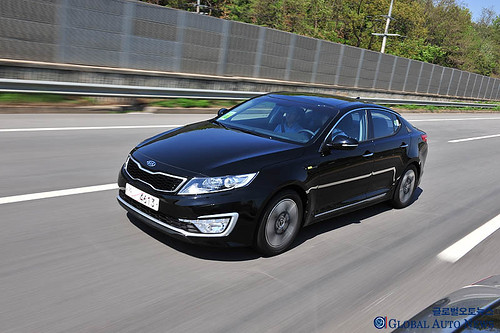
4. **2025 Kia K5**
The 2025 Kia K5, securing its position at number four in our comprehensive ranking of the best midsize sedans, continues to demonstrate Kia’s strategic commitment to refining its offerings to meet contemporary consumer expectations. Formerly recognized under the Optima nameplate, this vehicle has undergone several significant enhancements for the 2025 model year. These updates primarily focus on a revised powertrain and the thoughtful integration of Kia’s latest advanced dashboard screens, aiming to solidify its competitive standing in a segment increasingly defined by technological innovation and driver preferences. The K5 presents itself as an appealing contender for those seeking a modern sedan experience, balancing refreshed mechanicals with a sophisticated and tech-forward cabin environment.
A pivotal update for the 2025 Kia K5 lies in its revised standard powertrain, a change meticulously designed to enhance the daily driving experience. The previous standard engine, a 1.6-liter turbocharged unit, along with its associated dual-clutch automatic transmission, which was sometimes criticized for a jerky feel, has been retired. In its place, Kia has introduced a more robust and refined naturally aspirated 2.5-liter four-cylinder engine, now seamlessly paired with a conventional eight-speed automatic transmission. This new configuration not only delivers a slightly more powerful output but also promises a smoother, more predictable driving feel, addressing earlier critiques regarding transmission refinement and contributing to a more pleasant journey for occupants. For enthusiasts craving heightened performance and a more spirited engagement, the K5 GT variant remains available, boasting a potent 290-horsepower turbocharged 2.5-liter four-cylinder engine, providing a distinctly exhilarating experience behind the wheel. The option of all-wheel drive further enhances its appeal, offering improved traction and stability across various driving conditions, a practical advantage that positions it favorably against front-wheel-drive-only competitors.
Stepping inside the 2025 Kia K5, occupants are greeted by an interior that effortlessly projects an upscale, businesslike ambiance, meticulously crafted for both aesthetics and functionality. A notable improvement for this model year is the integration of Kia’s latest dashboard screens, which elevate the vehicle’s technological sophistication and user experience with sharp graphics and intuitive layouts. Even at the base model level, the K5 is impressively equipped with a suite of desirable standard features, including automatic climate control for optimal cabin comfort and brilliant LED headlights that enhance visibility and safety. Furthermore, Kia prioritizes occupant protection by incorporating a comprehensive array of advanced driver-assistance systems as standard. This includes automated emergency braking, a critical feature for preventing collisions, along with lane-keep assist to help maintain proper lane positioning, and automatic high-beam control, which intelligently adjusts lighting for oncoming traffic. These inclusions underscore Kia’s commitment to providing both convenience and peace of mind for all drivers and passengers, making the K5 a well-rounded offering in its class.
Visually, the Kia K5 maintains its striking presence, presenting an exterior and interior design that is widely considered attractive and thoroughly modern. Its sleek lines, fastback profile, and contemporary styling cues contribute to a vehicle that genuinely captures attention on the road, exuding a sporty aesthetic. However, despite its undeniably aggressive and visually athletic appearance, a common observation amongst reviewers is that the K5 “doesn’t drive as sporty as it looks.” While competent and comfortable for daily commuting and general use, its on-road dynamics might not fully deliver the exhilarating performance suggested by its aggressive styling, particularly when compared to certain rivals known for more engaging handling characteristics. This suggests that while the K5 offers an attractive package, those prioritizing a truly dynamic and spirited driving experience above all else might find its capabilities slightly tempered compared to its outward appearance. Nevertheless, for many consumers, the balance of distinctive style, everyday comfort, and robust standard features will be more than adequate.
In summing up the 2025 Kia K5, its strengths are notably clear, aligning well with consumer priorities for value and modern capability. Its “improved standard powertrain” represents a significant leap forward in refinement and daily usability, providing a more pleasant and powerful drive. The “available AWD” option provides crucial versatility for varying climates and road conditions, enhancing confidence. Furthermore, the integration of “great tech” elevates the driving experience, making the cabin a more connected and user-friendly space. However, potential buyers should be mindful of its acknowledged limitations: it’s “not as sporty as it looks,” meaning its driving dynamics might not fully match its aggressive visual appeal. The absence of a hybrid variant also places it at a disadvantage compared to segment leaders like the Sonata and Camry, which offer strong fuel economy benefits, and indeed, the “Accord drives better” in overall driving engagement. Ultimately, the K5 still offers a compelling package for those who value its distinctive style, robust standard features, and enhanced powertrain, making it a strong contender for a specific segment of midsize sedan buyers.
Read more about: Are You Driving a ‘Show-Off’ Vehicle? The Top 10 Car Brands Prone to Speeding Tickets
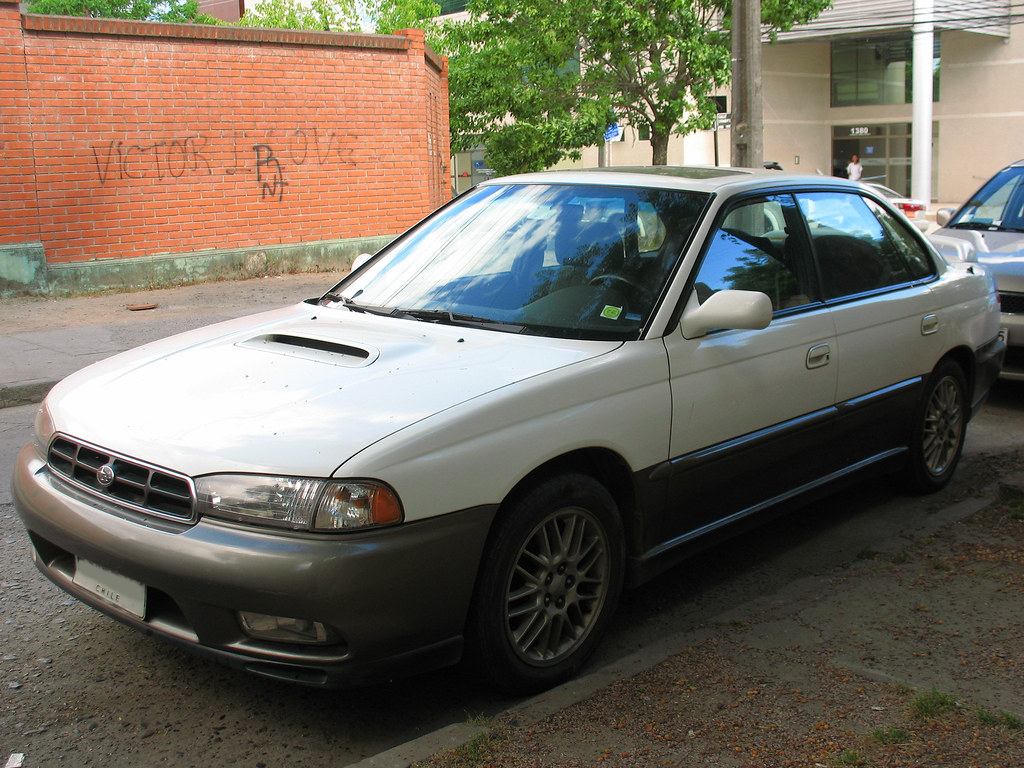
5. **2025 Subaru Legacy**
The 2025 Subaru Legacy, positioned at number five in our thorough evaluation, represents a distinctive offering within the midsize sedan market, deeply rooted in Subaru’s well-established brand identity. This identity is famously built upon two core pillars: an unwavering commitment to all-weather capability and, rather uniquely, a strong association with canine companions. While our primary focus remains on automotive performance and utility, the brand’s dedication to its adventurous, family-friendly image is undeniably a significant part of its broader appeal. Crucially, the Legacy stands out immediately by including all-wheel drive as a standard feature across its entire lineup, a philosophy applied to nearly every Subaru vehicle, distinguishing it from most competitors that offer AWD only as an optional upgrade. This foundational attribute firmly establishes the Legacy as a reliable choice for consumers prioritizing consistent traction and confidence in diverse driving conditions.
Beyond its all-weather prowess, the Legacy places a considerable emphasis on passenger safety, further fostering a profound sense of security and reliability for its occupants. This focus on comprehensive safety features, a hallmark of the Subaru brand, provides peace of mind to families and individual drivers alike. However, underneath these robust and reassuring attributes, the Subaru Legacy presents itself as a vehicle that is generally “inoffensive and generally lacks sportiness” in its driving character. Even when equipped with the available turbocharged engine, which typically promises a more spirited performance, it regrettably “fails to light much of a fire beneath this homely sedan.” This candid assessment suggests that while the Legacy competently fulfills its practical obligations, it may not ignite the passion of drivers seeking an exhilarating or dynamically engaging experience on the road. Its driving profile is more geared towards a composed, stable, and predictable journey rather than a thrilling one.
Despite its somewhat subdued driving dynamics, the Legacy manages to achieve a commendable ranking, largely due to its overall competence in key areas important to a broad spectrum of consumers. Its spacious interior, offering impressive “roominess,” ensures comfortable accommodation for passengers across both rows and ample cargo capacity in its commodious trunk, making it a highly practical choice for families. The vehicle also delivers a notably “comfortable ride,” adeptly absorbing road imperfections to provide a smooth and serene journey, a quality greatly appreciated on longer trips and daily commutes. As highlighted, its generous suite of standard “safety features” contributes significantly to its appeal, reflecting Subaru’s unwavering commitment to protecting its occupants through active and passive systems. Furthermore, the ubiquitous “standard AWD” remains a compelling advantage, providing superior grip and stability in challenging weather conditions, reinforcing its utility and value proposition in varying climates across the nation. These combined attributes make the Legacy a very sensible and well-rounded package for its specific audience.
The distinctive design language of the Subaru Legacy, while perhaps not universally acclaimed for groundbreaking aesthetics, contributes to its unique identity within the segment. Some might find its exterior “somewhat odd looks,” suggesting it prioritizes function and brand consistency over purely conventional stylistic flair, which can be polarizing. This design choice, coupled with a driving experience that can be described as “boring to drive,” indicates that the Legacy is engineered more for dependable transportation and comfortable commuting than for aesthetic excitement or dynamic thrills. Another interior detail that has drawn comment is that the “big touchscreen underwhelms” in its execution or user interface, potentially detracting from an otherwise functional cabin. This observation suggests that while the screen is physically large, its performance, responsiveness, or intuitive design might not fully live up to contemporary expectations, especially when compared to rivals that boast more cutting-edge infotainment systems. These factors contribute to its overall character as a practical, rather than overtly exciting, vehicle.
Prospective buyers of the 2025 Subaru Legacy should be aware of a critical development: the Legacy sedan will be “discontinued after this year.” This strategic decision by Subaru signals a significant pivot in their product strategy, as the manufacturer intends to “go all-in on its Outback wagon sibling and the rest of its SUV-focused lineup.” For those who appreciate the Legacy’s specific blend of attributes, this makes the 2025 model year the final opportunity to acquire a new one. Its primary strengths, including a “comfortable ride,” the invaluable “standard AWD,” and “lots of standard safety gear,” continue to make it a highly practical and secure choice for families and individuals. However, its perceived weaknesses, such as “somewhat odd looks,” being “boring to drive,” and an “underwhelming” large touchscreen, are factors to consider for those seeking more style or dynamism. Ultimately, the Legacy serves a niche for those who prioritize robust all-weather capability, proven safety, and a comfortable, spacious interior above spirited performance or groundbreaking design, making it a reliable, albeit soon-to-be-retired, family sedan.
Car Model Information: 2023 Subaru Legacy Limited
Name: Subaru Legacy
Caption: 2020 Subaru Legacy (United States)
Manufacturer: Subaru
Aka: Isuzu Aska
Production: 1989–2020 (worldwide),1989–2025 (North America)
Assembly: Ōta, Gunma
Class: Mid-size car
BodyStyle: Sedan (automobile)
Layout: Front-engine, front-wheel-drive
ModelYears: 1990–2025 (North America)
Categories: 1990s cars, 2000s cars, 2010s cars, 2020s cars, All-wheel-drive vehicles
Summary: The Subaru Legacy (Japanese: スバル・レガシィ, Hepburn: Subaru Regashi) is a mid-size car built by Japanese automobile manufacturer Subaru from 1989 to 2025. The maker’s flagship car, it is unique in its class for offering all-wheel drive as a standard feature, and Subaru’s traditional boxer engine.
In 1996, a variant of the Legacy with heightened suspension called the Legacy Outback was introduced to compete in the burgeoning sport-utility vehicle class, and proved to be a sales success for Subaru. The Outback line was split into its own model in 2008, known as the Subaru Outback.
As of 2008, 3.6 million Legacy models have been built since its 1989 introduction.
Production of the Legacy ended in Japan in June 2020, with the sixth-generation Legacy being the last model produced and marketed in Japan. Subaru of America announced in an internal email that 2025 will be the last model year for the Subaru Legacy. The Subaru Outback will remain in production, after being the company’s top selling model in 2023.
The Legacy was sold as the Liberty in Australia out of deference to Legacy Australia, an organisation dedicated to caring for the families of military service veterans.
Get more information about: Subaru Legacy
Buying a high-performing used car >>>
Brand: Subaru Model: Legacy
Price: $21,950 Mileage: 9,667 mi.
Read more about: Are You Driving a ‘Show-Off’ Vehicle? The Top 10 Car Brands Prone to Speeding Tickets

6. **2025 Nissan Altima**
Concluding our comprehensive analysis of the best midsize sedans, the 2025 Nissan Altima secures the sixth position, representing a vehicle that has seen considerable improvement over its past versions. Despite these advancements, the Altima is concurrently noted as “getting somewhat long in the tooth these days,” a reference to its last full redesign having been for the 2019 model year. This means that while it continues to offer a competent package, it operates within an automotive landscape rapidly evolving with newer, more contemporary designs and technologies from its competitors. Nevertheless, the Altima still presents a viable option for consumers, delivering reliable, competent performance and the added versatility of available all-wheel drive, attributes that continue to hold significant appeal in the family sedan segment. Its ongoing presence demonstrates Nissan’s commitment to offering a practical and accessible choice for daily transportation needs.
One of the most significant changes, and indeed a point of considerable discussion for the 2025 Altima, is the regrettable absence of its previously high-tech VC-Turbo engine option. This innovative powertrain, celebrated for its ability to “vary its compression ratio on the fly using mechanized connecting rods,” was a “novel achievement” in engine design. In theory, this allowed the engine to dynamically switch between compression settings under different loads, aiming to deliver both superior fuel economy during light use and robust power output when aggressive throttle inputs were applied. While the “results in the real world [were] mixed,” its discontinuation means that the Altima now relies solely on its standard 2.5-liter non-turbo engine. This engine is described as “satisfactory,” offering slightly more power when paired with front-wheel-drive configurations compared to those equipped with the optional all-wheel drive system, where its output is marginally reduced. This singular engine choice simplifies the lineup but removes a distinctive technological offering that once set the Altima apart.
Inside, the 2025 Nissan Altima features a “functional interior” that prioritizes usability and straightforward ergonomics, aligning well with its role as a dependable family sedan. While perhaps not boasting the most avant-garde design or luxurious materials, the cabin provides a practical and comfortable environment for daily commutes and longer journeys, focusing on ease of use. The exterior, in turn, showcases a “low-key handsome style,” suggesting an aesthetic that is agreeable, understated, and unlikely to be polarizing rather than overtly attention-grabbing. It appeals to a broad segment of buyers who prefer a more classic and less ostentatious look in their vehicle. However, a significant challenge for the Altima is the relentless pace of innovation from its rivals. The continuous introduction of “newer and better competitors” across the midsize sedan category means that even with its inherent improvements, the Altima finds itself progressively “leave[d] behind” in certain aspects of technology, performance, or overall refinement, demanding a candid assessment of its market position.
Delving into the driving experience, the Altima is generally perceived as a vehicle that “drives well,” offering competent road manners and a predictable feel for everyday use. Its steering is responsive enough for most situations, and the ride quality is generally comfortable, insulating occupants from minor road imperfections, contributing to a pleasant journey. However, this positive attribute is somewhat contrasted by certain drawbacks in its powertrain refinement. The standard 2.5-liter non-turbo engine, while satisfactory for general driving, is often criticized for being a “noisy engine,” particularly when pushed during acceleration, which can detract from the overall cabin serenity. Coupled with an “unrefined transmission,” the continuously variable transmission (CVT) can sometimes exhibit a less direct and more rubber-band-like feel compared to conventional automatics, which might not appeal to all drivers. These characteristics, while not entirely prohibitive, do highlight areas where the Altima falls short when benchmarked against the smoother, more polished performance of some of its segment leaders.
The 2025 Nissan Altima maintains its appeal for a specific demographic of buyers, primarily those prioritizing affordability and straightforward practicality. Its “somewhat affordable” price point and “good standard content” make it an accessible option, providing essential features without demanding a premium outlay. The fact that it “drives well” further reinforces its suitability as a reliable daily driver for routine tasks and commutes. However, potential buyers must weigh these advantages against its noted drawbacks. The “noisy engine” and “unrefined transmission” might impact long-term satisfaction for those sensitive to powertrain dynamics and overall cabin refinement. Most significantly, the “no more turbo option” removes a unique and powerful engine choice that once set the Altima apart, leaving it with a less compelling performance proposition. While the Altima offers a sensible and competent package, its age and the strength of its modern competitors mean it occupies a challenging position in a rapidly advancing segment, appealing more to value-conscious buyers seeking dependable, no-frills transportation.
Car Model Information: 2024 Nissan Altima 2.5 SV
Name: Nissan Altima
Caption: 2024 Nissan Altima SR (L34; US)
Manufacturer: Nissan
Aka: Nissan Bluebird
Production: 1992–present
Class: Compact car
Predecessor: Nissan Bluebird,Nissan Stanza
ModelYears: 1993–present
Categories: 2000s cars, 2010s cars, 2020s cars, All-wheel-drive vehicles, All Wikipedia articles written in American English
Summary: The Nissan Altima is a mid-size car manufactured by Nissan since 1992. It is a continuation of the Nissan Bluebird line, which began in 1955.
The Altima has historically been larger, more powerful, and more luxurious than the Nissan Sentra but less so than the Nissan Maxima. The first through fourth-generation cars were manufactured exclusively in the United States and officially sold in North and South America, along with the Middle East and Australia. For other markets, Nissan sold a related mid-size sedan called the Nissan Teana which was between the Altima and Maxima in terms of size. In 2013, the Teana became a rebadged version of the fifth-generation Altima.
The name “Altima” was originally applied to a top trim line of the Nissan Leopard for the Japanese market in 1986, and then to the Nissan Laurel Altima mid-size car sold in Central America and the Caribbean before 1992. In 1992, Nissan discontinued the Stanza which was a Nissan Bluebird clone, replacing it with the US-built Altima, while remaining a compact car. The first Altima was produced in June 1992, as a 1993 model. All Altima models for the North American market were built in Smyrna, Tennessee, until June 2004, when Nissan’s Canton, Mississippi plant also began producing the model to meet high demand.
Get more information about: Nissan Altima
Buying a high-performing used car >>>
Brand: Nissan Model: Altima
Price: $19,890 Mileage: 56,505 mi.
Read more about: Built to Last: 12 Reliable Sedans That Will Cruise Past 200,000 Miles
As our comprehensive exploration of the 2025 midsize sedan segment concludes, it’s abundantly clear that this category is far from merely surviving; it is actively thriving through intelligent reinvention. From the Toyota Camry’s bold embrace of hybrid power and elevated style, to the Honda Accord’s enduring mastery of driving dynamics and value, and the Hyundai Sonata’s daring design and technological prowess, these vehicles are setting new benchmarks for what a sedan can be. Even the Kia K5, Subaru Legacy, and Nissan Altima, each with their unique strengths and considerations, underscore the segment’s diverse and compelling offerings. These aren’t just cars; they are meticulously engineered responses to the modern consumer’s evolving desires, proving that practicality and panache can indeed beautifully coalesce. In an era where crossovers and SUVs often command the spotlight, these midsize sedans stand as powerful testaments to innovation, offering compelling alternatives that resonate with discerning drivers who understand that true automotive excellence comes in many sophisticated forms, eagerly awaiting their next journey on the open road.


